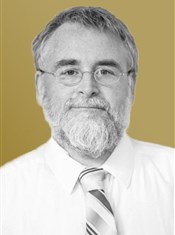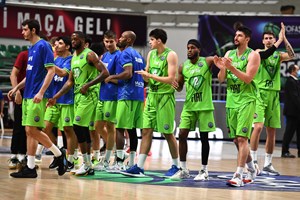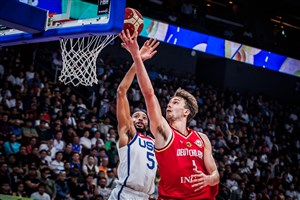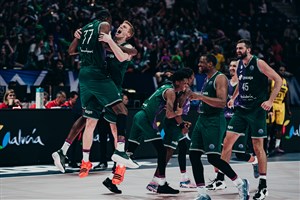
Hachimura's cultural and educational mix leaving lasting legacy among Japan's next young talents
REGENSBURG (David Hein's Eye on the Future) - The legacy of Rui Hachimura cannot be underestimated in how it changed the course of Japanese basketball. And that actually in multiple ways. While Japan’s basketball mega-superstar inspires the youth in Nippon, his cultural and educational mix are leading another group of young Japanese to try and make their names in the country's emerging B.League.
Hachimura enjoys rockstar status in his homeland and the up-and-coming B.League is pushing hard to turn basketball into a big show in the country. The B.League’s motto for the 2021-22 season is "Drive You Crazy" and the current campaign even has a theme song - called "Win / Lose." Add to that “Drive To Dream” as the theme for the 2022 B.League All-Star Game weekend in Okinawa in January.
The marketing people of the league seem to be working overtime to attract youngsters throughout the country to a league that is getting better and better in recent years - also by attracting bigger and bigger names from abroad thanks to increased salaries.
But while it is improving from a quality standpoint, the B.League remains the oldest league among the top competitions in the world. Japan's top flight has registered the oldest average age among 16 leagues in the International Basketball Migration Report 2021 done by the CIES Sports Observatory - which researched domestic competitions around the globe as well as the pan-European VTB United and Adriatic leagues.
The average age in 2020-21 for the B.League was 28.3 years - quite a bit older than the second-oldest ranked league from Greece at 27.1 years. Japan's league has been the oldest in each season since the CIES began including the league in its report in 2018: 28.8 years in 2017-18, 28.6 in 2018-19, 28.5 in 2019-20.
And Japanese clubs were among the oldest in the world each season as well. In 2017-18, the three oldest teams in average age in the report were from Japan: Yokohama B-Corsairs (31.5 years), San-En Neonphoenix (30.5) and Chiba Jets (30.4). In 2018-19, Niigata Albirex BB were fourth-oldest (30.3) and Chiba ranked fifth (30.0). In 2019-20, Utsunomiya Brex were the oldest (31.1) and Albirex were fifth oldest (30.0). And last season, SeaHorses Mikawa were tied for fourth-oldest (29.9) and Brex were fifth (29.8).
The fact that very few young players got onto the court did not help the situation - as the youngsters could help bring down the average age.
The CIES report also collects information on how much playing time national U21 players receive. And unsurprisingly, the B.League was at or near the bottom every season. It was dead-last in 2017-18 with just 1.2 percent of U21 national players on the rosters. That number was 3.7 percent in 2018-19, 4.4 percent in 2019-20 and 5.0 percent last season.
B.League teams also used the fewest number of U21 national players for most of those seasons as well: just 3 players in 2017-18, 10 in 2018-19 (ranked second-fewest ahead of Australia’s 7), 12 in 2019-20 and 15 U21 players in 2020-21.
What must be said is that Japan teams have actually given their U21 players solid playing time when they do get to the court. The 2.0 average minutes per game played by national U21 players was tied for last in 2017-18. That figure was 6.9 minutes in 2018-19 and ranked fourth-most, followed by 8.2 minutes and a second-best ranking in 2019-20 and then 6.9 minutes for sixth-most last season.
 Avi Schafer
Avi Schafer
Those numbers do not really look like they will go up very much in the 2022 CIES report as there are very few national U21 players on the B.League rosters this season. But one trait about some of the league's younger players trying to get minutes is that connection to Hachimura - as well to current Japanese national team center Avi Schafer of the SeaHorses.
Both Hachimura and Schafer are biracial - the former with a Beninese father and Japanese mother and the latter with an American father and Japanese mother. Japan's two stars also have the similarity that both went to study and play basketball in the United States - Hachimura famously at Gonzaga University where he helped the Zags to the 2017 NCAA Final Four and title game; and Schafer was a preferred walk-on at Georgia Tech in the famed Atlantic Coast Conference with superpower teams such as Duke, North Carolina, Wake Forest, Virginia, Syracuse and Louisville. That came after he played college prep basketball in the US and won the prep national title that season.
Some of the B.League's youngest players tried that same Japan-to-United States-and-back-to-Japan path.
The 23-year-old Kai Toews started high school in Japan and transferred to Bridgon HS in the United States and attended Mount Herman prep school before spending 1.5 seasons at college - at the University of North Carolina Wilmington - before he came back to Japan in January 2020 to play for Tochigi Brex. Toews, who had played for Japan at the Williams Jones Cup in 2019, had a superb freshman season at UNCW with 8.8 points, 2.6 rebounds and 7.7 assists and he was averaging 5.5 points, 2.1 rebounds and 4.3 assists when the pandemic hit last season. Upon coming back to his homeland, Toews helped Brex reach the Japanese B.League finals last season with 5.5 points a game. Toews' younger brother Luka is currently at Mount Herman and will likely be attending college in the US as well.
The 2000-born Keigo Kimura also attended a college prep school in the United States before playing three games in the abbreviated 2020-21 season for the NCAA Division III University of Saint Joseph, where he was coached by Hall of Fame playcaller Jim Calhoun. This season Kimura is back in Japan and playing for Niigata.
Isaiah Murphy of the Hiroshima Dragonflies meanwhile has a Japanese mother and American father who served in the Air Force in Japan, where Isaiah was born. The family moved to the United States, where Murphy played high school basketball in Arizona and later went to Pima Community College. It was there that the 1998-born guard was noticed by Japan's youth national team system - thanks to a video his mother sent to the Japanese federation - and he played at the FIBA U19 Basketball World Cup 2017, where he played under the name Shinsaku Enomoto.
The 23-year-old Mark Burton meanwhile was born in Tokyo before going to high school in Utah in the US and then playing collegiately at Clark Atlanta University and Fayetteville State University. He is now playing with Earth Friends Tokyo Z of Japan’s second division B2League.
The 1998-born Max Hisatake of the Sun Rockers Shibuya, for his part, has bloodlines in Japan and Samoa and was born and raised in Las Vegas, playing college basketball at the Illinois Institute of Technology at Chicago before arriving in Japan this off-season.
Osaka's Ryuji Aoki had a similar path as Murphy, having been born in Japan before his family moved to the United States when he was in second grade. The 1998-born playmaker went to high school in the state of Illinois and then played collegiate basketball at the NCAA Division III Rose-Hulman Institute of Technology. And he returned to Japan to play in 2019-20.
Aoki's teammate is Eliet Donley, who was born in Yokosuka City and played at NCAA II program Chaminade University in Hawaii before coming back to Japan in 2020.
Osaka seems committed to taking a chance on these players. A third such Evessa player who fits this mold is Kedrick Stockman Jr. Like Donley, he too was born in Yokosuka City and attended Nile C. Kinnick High School in Japan before heading to the United States to play at Scotland Prep School in Pennsylvania. He returned to Japan and has since landed a Special Designated Player status with Yokohama B-Corsairs last season and now with Osaka for 2021-22. Japanese clubs are allowed to register up to two U22 special designated players in the B.League during the season.
Kaine Roberts was the first to use the special designation to play as an amateur to use it to help his recruiting to US colleges, playing last season with the Tokyo Z. The 2002-born guard was born in Japan with a US Navy official as father and spent many years in Hawaii before going back. After playing with Earthfriends in 2020-21, Roberts earned a scholarship to play at Stony Brook University in the United States.
Another player with a special designation deal for this season is Akira Jacobs Kumagai, who is the youngest player in the league as he won't celebrate his 18th birthday until April 13. Like Donley and Stockman, he too was born in Yokosuka City - home to a US Navy base - but moved to the United States shortly after his birth and grew up in California, where he played high school basketball. He returned to Japan in December 2020.
And there is also Yuto Williams Yamanouchi with Tokyo Z, who was born in Japan and raised in Japan and United States and is still interested in playing collegiatly in the US. The big man also played for Japan at the FIBA U19 Basketball World Cup 2021 this past summer.
Looking at all of those players makes one wonder where they would be had Rui Hachimura not made the breakthroughs he did. And it reminds one just how much Hachimura's legacy already lives on in Japan.
David Hein
FIBA
FIBA's columnists write on a wide range of topics relating to basketball that are of interest to them. The opinions they express are their own and in no way reflect those of FIBA.
FIBA takes no responsibility and gives no guarantees, warranties or representations, implied or otherwise, for the content or accuracy of the content and opinion expressed in the above article.

















